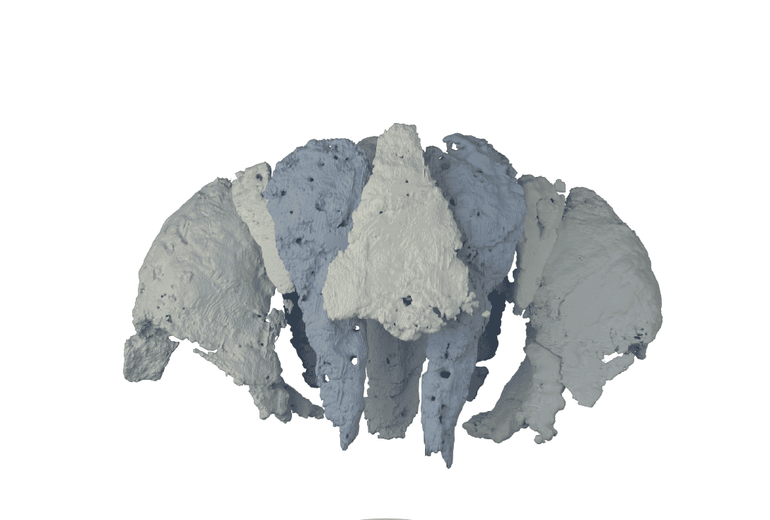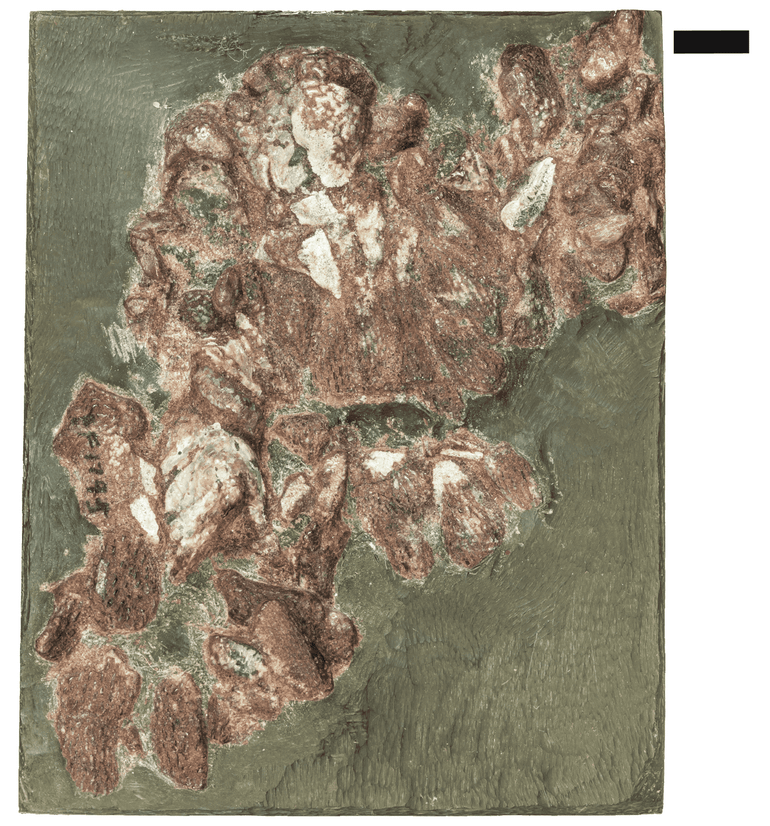
Evolution of the skull further uncovered with a 455-million-year-old fish
Naturalis Biodiversity Center“To someone who isn’t an expert the fossil looks like nothing special”, says Richard Dearden, a paleontologist and postdoctoral fellow at Naturalis. The first appearance of the fossil doesn't reveal anything about how important it is. But the anatomy of the prehistoric fish is strange and doesn’t look like that of other vertebrates, animals with bones. That the fossil was preserved so well is remarkable because parts of the skeleton are made of cartilage, which normally doesn't fossilize. In this case, the cartilage may have been mineralized which probably enhanced its preservation. At least, the pieces of skull from the fossil closely resemble cartilage pieces found near the fossil that were cut up and studied under a microscope. Only when the pieces are examined under a microscope, we can tell with 100 percent certainty whether they are cartilage. Richard didn't do this for Eriptychius americanus because it is not possible to simply take the fossil apart.
CT-scanning a fossil
Therefore, Richard and collaborators scanned the fossil with a CT scanner to create a model of the prehistoric fish's skull. "It's a bit like doing an X-ray scan, which you get in the hospital. You place the fossil in the middle with a machine on one side that shoots X-rays at the fossil, and on the other side is a detector that detects what is passing through the fossil. Pieces that are more dense absorb more X-rays, like bone in a hospital x-ray. With the help of two computer programs the information is converted into a 3D object", Richard explains. This 3D object then helps to exactly understand how the skull was put together and what materials it was made of.

Missing knowledge
Dearden's research fills a gap of almost 100 million years in knowledge about the evolution of vertebrate skulls, animals with a spine and skull. Flat fossils of vertebrates have been found that are about 500 million years old. The first 3D fossils of skulls found are younger and come from the Silurian geological era, about 443 to 419 million years ago. The fossil of the Eriptychius americanus is 455 million years old, bridging the period between the other fossils.

Record for oldest fossil
This is the first time Richard has ever worked with such an ancient fossil. "I think this is a personal record for oldest fossil", he says. The fossil was found in the United States in 1949 and has been at the Field Museum in Chicago ever since. In 1967, paleontologist Robert Denison described the fossil, but after that no one studied the skull of the prehistoric fish until Richard and his team decided to scan the fossil. Now Richard and his colleagues would like to find out if the skull of the prehistoric fish is really made of cartilage. They would also like to scan the fossil with so-called synchrotron tomography. This way he hopes to be able to understand the anatomy of Eriptychius americanus even better.
More information
- A video of the 3D reconstruction of the skull of Eriptychius americanus.
- The scientific publication about this study.
- Richard Dearden's page on Naturalis.nl.
Text: Lotte Berendse, Naturalis Biodiversity Center
Images: Ivan J. Sansom; Richard Dearden
